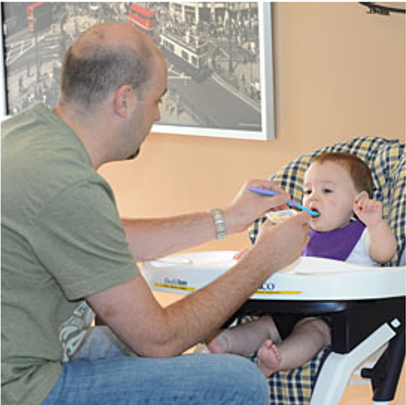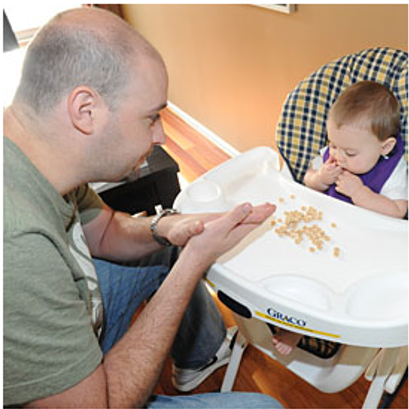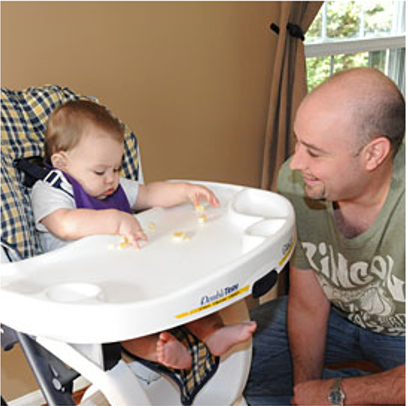
Once your pediatrician has okayed it, introduce your baby to baby food. Place him in his high-chair and let him enjoy the new tastes and textures of the foods. Talk to him as you feed him, making eye contact and smiling as you do. Encourage him when he makes “music” by clapping and banging the chair’s tray.
 This activity will help your child learn to express herself and show interest and attachment to you. She will learn to respond to language and begin to understand that she can make things happen, including making her body parts move.
This activity will help your child learn to express herself and show interest and attachment to you. She will learn to respond to language and begin to understand that she can make things happen, including making her body parts move.

Eating, although very messy, is a great time for your baby to practice many of his skills. The raspberries he blows with a mouth full of baby food, the Cheerio he tries to pick up with his little fingers, and the kicking and clapping are all helping his development. Use words and simple sign language to describe what you see him doing.
 Allowing your child to be an explorative eater will help him to learn to express himself. Listening to your words will help him respond to sounds and begin to understand how communication works. He will learn that he can control what is happening around him and how he can make different parts of his body move.
Allowing your child to be an explorative eater will help him to learn to express himself. Listening to your words will help him respond to sounds and begin to understand how communication works. He will learn that he can control what is happening around him and how he can make different parts of his body move.

Introduce your baby to new finger foods. As you do, tell him what the food is called and how the food tastes, looks and feels. “Here is a little piece of banana. It is sweet, white, and kind of slippery.” As you speak to him, make eye contact and smile. Listen to him and respond to you, and encourage him to feed himself.
 This activity will teach your child to express himself and build an attachment to you. Listening to your words will help him respond to sounds and begin to understand how communication works. Eating at a regular time will help him understand things happen at specific times. He is also learning that he can control what is happening around him and how he can make different parts of his body move.
This activity will teach your child to express himself and build an attachment to you. Listening to your words will help him respond to sounds and begin to understand how communication works. Eating at a regular time will help him understand things happen at specific times. He is also learning that he can control what is happening around him and how he can make different parts of his body move.
